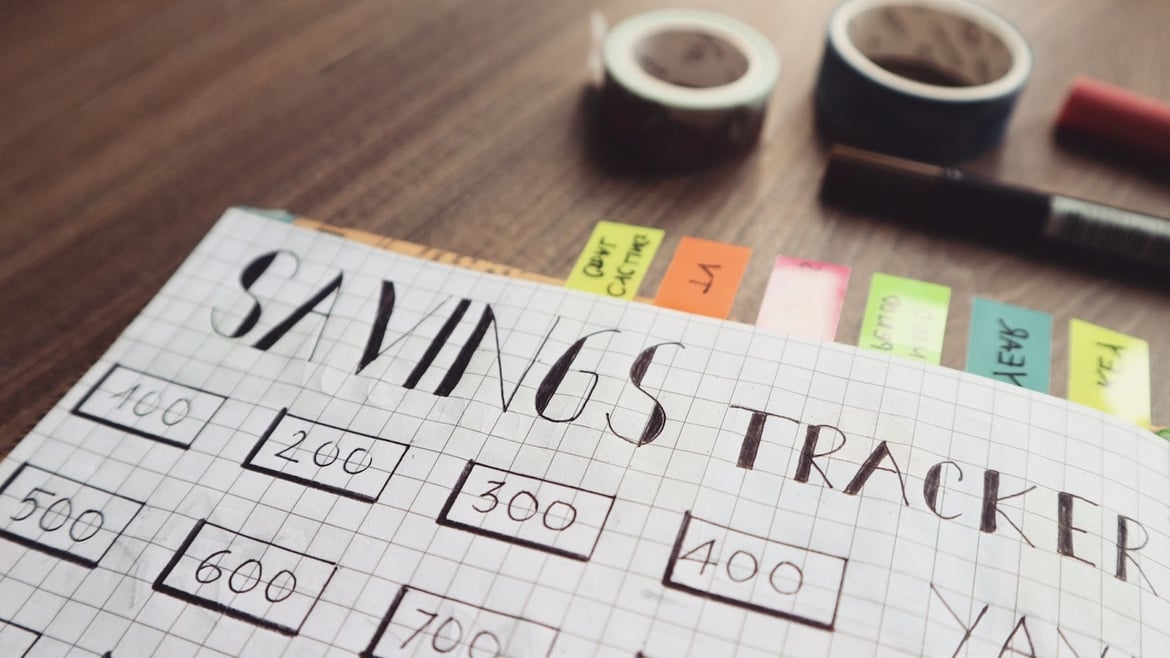It's that time of year again - we've barely digested our turkey and we're already thinking about the new year ahead. Specifically, what we'd like to accomplish or change about ourselves. New year financial resolutions can help you stick to your financial goals for the year ahead.
An estimated 74% of people surveyed made a new year's resolution for 2021, determined to either pick up a new skill, improve their fitness, get in better financial shape or achieve another goal. And data shows that new year's resolutions are effective. Fidelity's 2022 New Year's Financial Resolutions Study found that those who made financial resolutions at the start of 2021 are more positive about their finances than those who didn't.
Results indicate that 81% of respondents who made resolutions think they will be better off financially in 2022, compared to 58% of those who failed to set any goals.
It's clear that making financial resolutions can be beneficial, but how do you set financial goals for 2022 that you will actually stick to? Here are our tips for overcoming common challenges around money-related objectives.
Sending money overseas? Save money when you send money with CurrencyFair's competitive exchange rates.
Financial resolution 1: How to create a household budget
Tip: Start tracking your expenses
If you don't have a household budget, then you're flying in the dark from a financial point of view. You don't know what's really going in and out of your accounts and so you're unable to set realistic financial goals.
The first step in creating a budget is to monitor your regular expenses. Find out what you spend in a typical month on groceries, travel, meals out, utilities, etc. If you're able to come up with an average of costs across a few months then that's even better as it will provide a more accurate overview of your outgoings.
Next, you can forecast your costs for each month. You can easily find helpful budget planners online for free. Don't forget to plan for those expenses that come up only once or twice per year - car services, birthday gifts, annual licences, etc.
Map these costs against your monthly income. If you're already left with a deficit in your budget then you need to cut costs somewhere (or earn more money!) The good news is that it's only the start of the year so there's still time to make changes. If it looks like you'll have money to spare each month then you can think carefully about how you want to spend or save these funds.
Financial resolution 2: How to save money for the future
Tip: Automate your savings
Savings are easier to tackle on a “little and often” basis. For example, if you're planning a holiday that costs �1000, it's better to save �20 each week rather than panic-saving in the months before your trip. Or worse, getting into debt.
It's also good practice to put any money allocated for saving into a separate account as soon as you receive your monthly income, as then you're less tempted to spend it. You could set up a standing order so this happens automatically and you don't run the risk of forgetting to save.
After tracking your expenses, you might discover that you can comfortably save 10% of your monthly income, for example, so you could start the new year by setting up a standing order that sends these funds directly into a savings account at the beginning of the month.
Financial resolution 3: How to train yourself to spend less money
Tip: Analyse everything!
Tracking your monthly spending each month may also shed light on where you can easily cut costs. For example, you might decide to switch your �3 daily coffee for a homemade version, saving �21 per week. Or perhaps you'll uncover a few subscriptions that you're paying for but don't use. Cancel them and save the money instead. Go for the easy wins first.
Make it a monthly practise to check in and celebrate the savings you've made that month. Schedule a calendar appointment to review your expenses - that way you won't forget your resolution come March. Once you're in the habit, it can be so motivating to see your savings increase. You may find you're eager to save even more and able to cut spending in other areas of your life.
Financial resolution 4: How to create an emergency fund
Tip: Know what you're working towards
If there's anything the Covid-19 pandemic has taught us, it's to expect the unexpected. Whether it's a natural disaster, a broken boiler or finding yourself suddenly without work, it's important to have a financial cushion ready to help you and your family during tough times. Most of us know that we need an emergency fund, however, a recent survey shows that 25% have absolutely no emergency savings and 26% have some funds for emergencies, but not enough to cover the recommended three month period. It's difficult to know how much to save and within what timeframe.
If you don't already know your monthly expenses from tracking your outgoings (see goal one of this article) then get that figure first. Remember that you're looking at essential outgoings only - mortgage payments, groceries, bills, utilities, etc. Multiply this number by three to get your target amount. If you already have some savings available for emergencies then subtract this from the target and you have your goal amount.
For example, Kara needs �2,000 per month to cover essential expenses, so her emergency fund should be �6,000. She already has �2,000 saved, so she needs a further �4,000.
The next question is how quickly you need to build up these savings. The obvious answer is - the sooner the better. A crisis can happen at any time. If you want three months' worth of expenses, then experts say that six months is a reasonable timeframe for saving. For Kara to save �4,000 within six months, she needs to allocate �667 of her monthly income to these savings. This may not be possible, or she may be able to put even more money aside per month - everyone will have different potential for saving. The bottom line is this - you should prioritise your emergency fund over any other savings until you reach that target figure.
Know your numbers
Whatever your financial resolution for 2022, it pays to know your numbers. Get as well acquainted with your finances as you can and build check-ins into your everyday life so that you can either congratulate yourself for the progress you're making or take steps to get back on track.
Changing mindset and behaviour is a long-term process that takes a considerable cognitive effort, so you need to find ways to keep reminding yourself of your goals and celebrating each win.
It's a good idea to make your financial resolutions specific so that you can acknowledge when you've achieved them. And break annual resolutions into tangible smaller goals so that you continue to stay motivated through the year. For example, instead of deciding to “save more money in 2022” you could “save �1,500 in 2022” with the intention of buying a car. You could even break this down further and aim to save �28 per week. It's more challenging to stay committed to achieving the goal if the reward seems too far in the future, or too vague.
Sending money overseas? Save money when you send money with CurrencyFair's competitive exchange rates.
This information is correct as of 20 December 2021. This information is not to be relied on in making a decision with regard to an investment. We strongly recommend that you obtain independent financial advice before making any form of investment or significant financial transaction. This article is purely for general information purposes. Photo by Bich Tran from Pexels.













